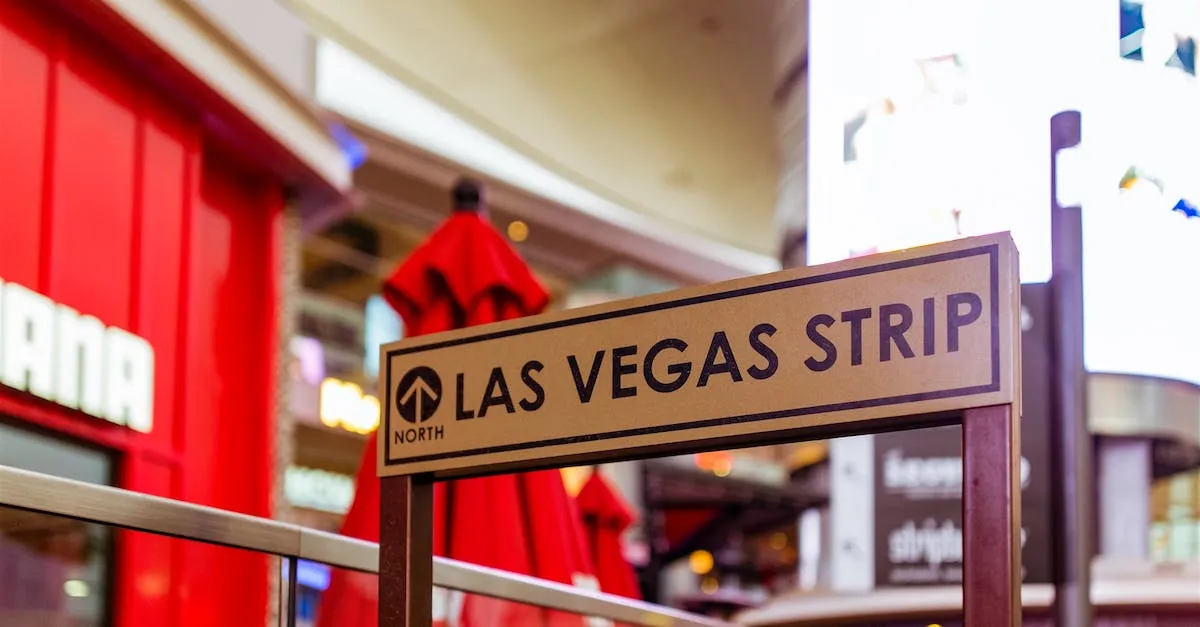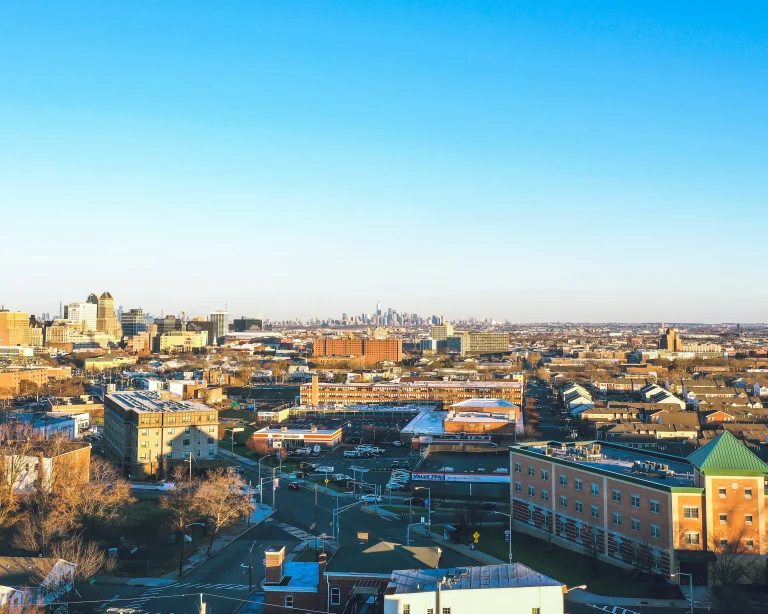Is Las Vegas Part Of The West Coast? Examining Vegas’ Geography And Regional Identity
With its glittering casinos and reputation for excess, Las Vegas is one of the most famous cities in the American West. But is Sin City actually considered part of the iconic West Coast region? If you’re short on time, here’s a quick answer: While not directly on the Pacific Ocean, Las Vegas is generally grouped under the West Coast umbrella due to its geography, culture, and tourism ties.
In this in-depth article, we’ll look at how Las Vegas fits into West Coast geography, its similarities to West Coast states in culture and attitude, and its brand as a classic West Coast travel destination.
Las Vegas’ Geographic Location and Features
Location within the western U.S.
Las Vegas, often referred to as the “Entertainment Capital of the World,” is located in the southwestern part of the United States. Specifically, it is situated in the state of Nevada. While Nevada is largely considered part of the western region of the country, there is some debate as to whether Las Vegas itself is considered part of the West Coast.
Geographically, Las Vegas is located in the southern part of Nevada, approximately 80 miles northeast of the California border. This proximity to California has led some to categorize Las Vegas as part of the West Coast, while others argue that it is more accurately classified as part of the Southwest.
Despite this debate, Las Vegas shares many cultural and economic similarities with other West Coast cities, and it is often included in discussions and comparisons of West Coast destinations.
Part of the Mojave Desert
One defining geographical feature of Las Vegas is its location within the Mojave Desert. The Mojave Desert is one of the driest deserts in North America and covers a vast area that includes parts of California, Nevada, Arizona, and Utah.
Las Vegas experiences a desert climate, characterized by hot summers and mild winters. The city is known for its arid landscape, with sparse vegetation and a surrounding desert environment that contrasts with the bright lights and bustling activity of the Las Vegas Strip.
The desert setting adds to the unique charm and allure of Las Vegas, attracting visitors from around the world who are fascinated by the juxtaposition of the vibrant city against the stark desert backdrop.
Mountain ranges and lakes
While Las Vegas is primarily known for its desert surroundings, it is also surrounded by stunning mountain ranges and is in close proximity to several lakes.
To the west of Las Vegas, the Spring Mountains rise dramatically, forming a picturesque backdrop for the city. Mount Charleston, part of the Spring Mountains, offers visitors the opportunity to escape the desert heat and experience cooler temperatures, hiking trails, and winter sports.
In addition to the mountain ranges, Las Vegas is also near several lakes, such as Lake Mead and Lake Mohave. These lakes provide opportunities for boating, fishing, and other water activities, offering a refreshing contrast to the desert climate.
Shared Culture and Attitudes with West Coast States
While Las Vegas may not be geographically located on the West Coast, it shares many cultural and attitudinal similarities with the states along the Pacific coastline. This has led to a strong connection between Vegas and the West Coast, making it a popular destination for West Coast residents and a region with a shared identity.
Libertarian streak
One of the key similarities between Las Vegas and the West Coast states is a libertarian streak that runs through the region. Both Vegas and the West Coast have a reputation for embracing individual freedom and a live-and-let-live attitude.
This can be seen in the liberal social policies, relaxed approach to gambling and entertainment, and an overall acceptance of diverse lifestyles.
Casual outdoorsy lifestyle
Another aspect that Vegas shares with the West Coast is a casual outdoorsy lifestyle. While Vegas may be known for its bustling casinos and vibrant nightlife, its residents also enjoy outdoor activities such as hiking, biking, and golfing.
The nearby Red Rock Canyon and Mount Charleston offer breathtaking natural landscapes that attract outdoor enthusiasts. This laid-back lifestyle resonates with the easygoing nature of the West Coast.
Diverse food, music, and arts
Las Vegas, like the West Coast, is a melting pot of different cultures, resulting in a diverse food, music, and arts scene. The city boasts a wide range of culinary options, from world-class fine dining establishments to street food vendors offering international flavors.
Similarly, the music and arts scene in Vegas embraces various genres and styles, with numerous live performances, art exhibitions, and cultural events happening throughout the year.
Furthermore, Vegas hosts major music festivals and has a thriving live music scene, attracting artists from all over the world. The city’s art galleries and museums showcase works that reflect the diverse influences of its residents and visitors.
Tourism Links Between Vegas and the West Coast
Las Vegas, often called the Entertainment Capital of the World, has strong tourism links with the West Coast of the United States. Its proximity to major West Coast cities, along with its unique attractions and vibrant nightlife, make it a popular addition to West Coast road trips.
A popular addition to West Coast road trips
When travelers embark on a road trip along the West Coast, Las Vegas is often included as a must-visit destination. The city’s famous Las Vegas Strip, with its dazzling resorts, casinos, and entertainment venues, attracts millions of visitors each year.
Tourists from California, Oregon, and Washington often make a stop in Las Vegas to experience the excitement and glamour that the city has to offer.
With its close proximity to major West Coast cities such as Los Angeles and San Francisco, it’s easy for tourists to incorporate a visit to Las Vegas into their travel itinerary. Whether it’s a weekend getaway or a longer vacation, many travelers choose to drive to Las Vegas from nearby West Coast cities, enjoying the scenic routes and making memorable stops along the way.
Direct flights connect Vegas to West Coast hubs
In addition to being a popular destination for road trips, Las Vegas is also well-connected to major West Coast cities through direct flights. Visitors can easily fly from cities like Los Angeles, San Francisco, and Seattle to Las Vegas, making it a convenient and accessible option for West Coast residents looking for a quick getaway or a fun-filled vacation.
Several airlines operate frequent flights between Las Vegas and West Coast hubs, offering a range of options for travelers. Whether it’s a budget airline or a full-service carrier, there are plenty of choices available to suit different preferences and budgets.
With the short flight duration, visitors can spend more time enjoying the attractions and entertainment in Las Vegas rather than spending hours on travel.
Part of the ‘Wild West’ brand
Las Vegas has long been associated with the image of the Wild West and the frontier spirit. The city’s history, with its roots in gambling, bootlegging, and organized crime, adds to its allure and mystique.
This connection to the Wild West brand is a significant factor in attracting tourists from the West Coast and beyond.
Many visitors are drawn to Las Vegas because it represents a unique blend of the old and the new, where the spirit of the Wild West meets modern-day entertainment. The themed resorts, such as the iconic Caesars Palace and the Luxor Hotel, evoke a sense of nostalgia and adventure, further enhancing the city’s appeal.
Additionally, Las Vegas hosts various events and festivals that celebrate the Wild West heritage, such as rodeos, cowboy-themed shows, and Western-style competitions. These events attract tourists who are interested in experiencing the cowboy culture and getting a taste of the Wild West atmosphere.
How Las Vegas Differs from the West Coast
While Las Vegas may be located in the southwestern United States, it is not typically considered part of the West Coast region. Here are a few key reasons why Las Vegas differs from the West Coast:
The desert climate
One major factor that sets Las Vegas apart from the West Coast is its unique desert climate. The city experiences hot, dry summers and mild winters, with very little rainfall throughout the year. This stark contrast to the cooler, more moderate climate found along the West Coast, where cities like San Francisco and Seattle enjoy milder summers and more rainfall, contributes to Las Vegas’ distinct geographical identity.
More libertarian laws and policies
In addition to its climate, Las Vegas also stands out from the West Coast in terms of its laws and policies. The city and the state of Nevada have a reputation for embracing a more libertarian approach, especially when it comes to issues like gambling and adult entertainment.
While some West Coast cities may have similar industries, Las Vegas has become synonymous with its casinos, extravagant shows, and entertainment options that are not as prevalent in other parts of the West Coast.
Man-made, suburban sprawl
Las Vegas is known for its sprawling suburbs, which have expanded rapidly over the years. The city’s growth has been fueled by its booming tourism industry and the development of numerous residential communities and resorts.
This kind of suburban sprawl is not as common along the West Coast, where cities tend to have denser urban cores and a greater emphasis on sustainable development.
While Las Vegas shares some similarities with West Coast cities, such as its proximity to California and its reputation as a popular tourist destination, it is important to recognize the distinct characteristics that make it stand out.
Its desert climate, more libertarian laws and policies, and man-made suburban sprawl all contribute to Las Vegas’ unique identity as a city that is separate from the West Coast.
Las Vegas’ Complex Regional Identity
Las Vegas, the bustling city known for its vibrant nightlife, world-class entertainment, and iconic casinos, has a complex regional identity that sparks debates among Nevada locals and beyond. While some argue that Las Vegas is part of the West Coast, others view it as a unique entity within the western region of the United States.
Debates among Nevada locals
Within the state of Nevada itself, there are ongoing debates about whether Las Vegas should be considered part of the West Coast. Some argue that its proximity to California and the shared cultural influences make it more aligned with the West Coast identity.
They point to the influx of Californians, the prevalence of palm trees, and the laid-back lifestyle that seem to mimic the coastal vibe.
On the other hand, there are those who firmly believe that Las Vegas is distinct from the West Coast. They emphasize the city’s desert location and its unique history and culture that set it apart from coastal cities.
The strong presence of the gaming industry and the city’s reputation as the entertainment capital of the world also contribute to this distinct regional identity.
Perceived as distinct within the West
While Las Vegas may not be geographically located on the West Coast, it is often perceived as distinct within the larger western region. This perception arises from the city’s reputation as a destination that stands out from other western cities.
Las Vegas is renowned for its over-the-top architecture, extravagant resorts, and dazzling entertainment options that are unmatched in the region.
Furthermore, Las Vegas serves as a major transportation hub, attracting visitors from all over the world. Its world-class airport, McCarran International Airport, connects the city to various domestic and international destinations, further solidifying its status as a unique city within the West.
Unique mix of western regional influences
Las Vegas is undeniably influenced by the western region of the United States, but it also embraces a unique mix of cultural influences. The city’s architecture, for example, combines elements of the Wild West with modern designs, creating a distinct visual appeal.
The western heritage is also celebrated through rodeos, cowboy-themed attractions, and events that showcase the region’s cowboy culture.
At the same time, Las Vegas incorporates elements from other regions, such as the East Coast with its luxurious resorts and entertainment venues, and international influences through its diverse culinary scene.
This blend of different regional and global influences contributes to the city’s vibrant and eclectic identity.
Conclusion
While not technically located on the Pacific coastline, Las Vegas is generally considered part of the broader West Coast region. Its desert landscape, libertarian culture, and tourism connections link Sin City closely to coastal states like California. However, Vegas also maintains a distinct identity as an outlier within the region. Its complex blend of western influences make Las Vegas a true regional original.








